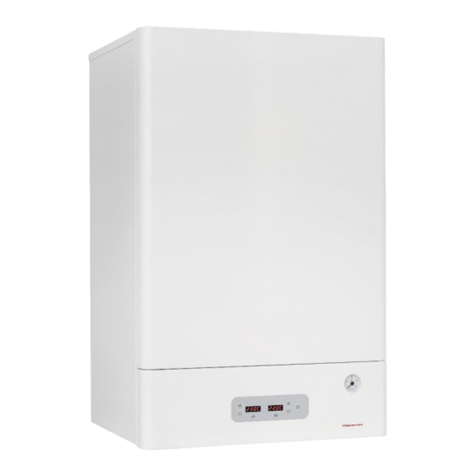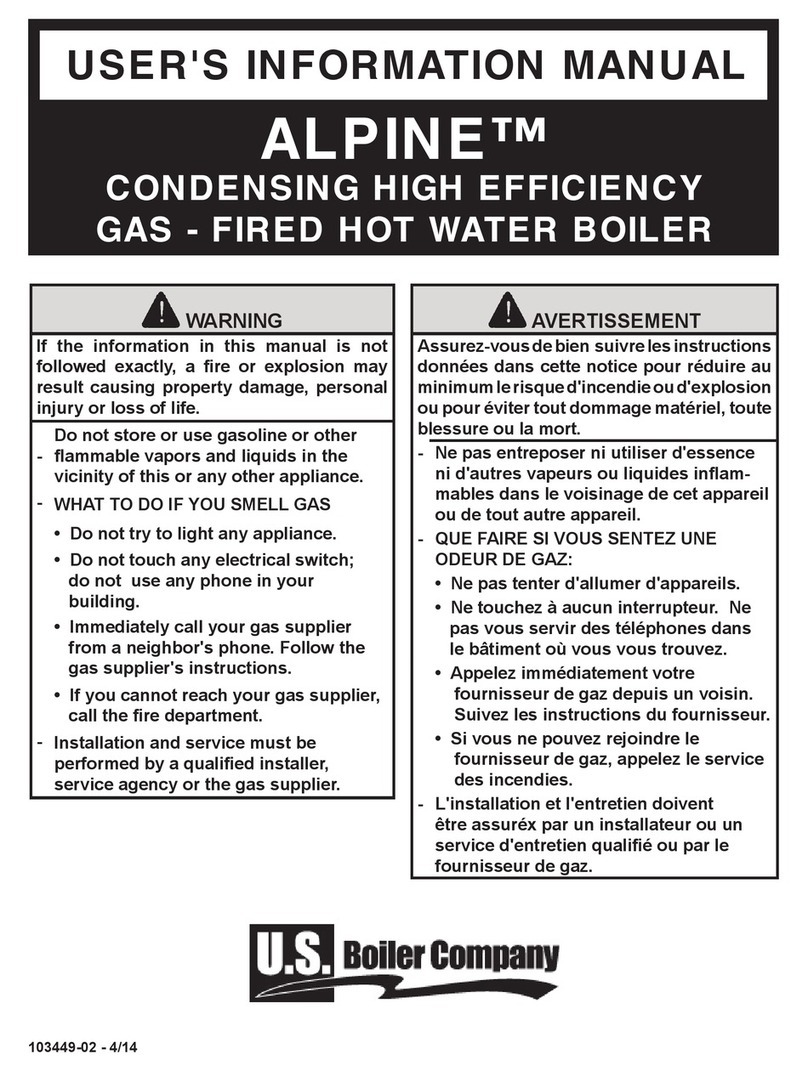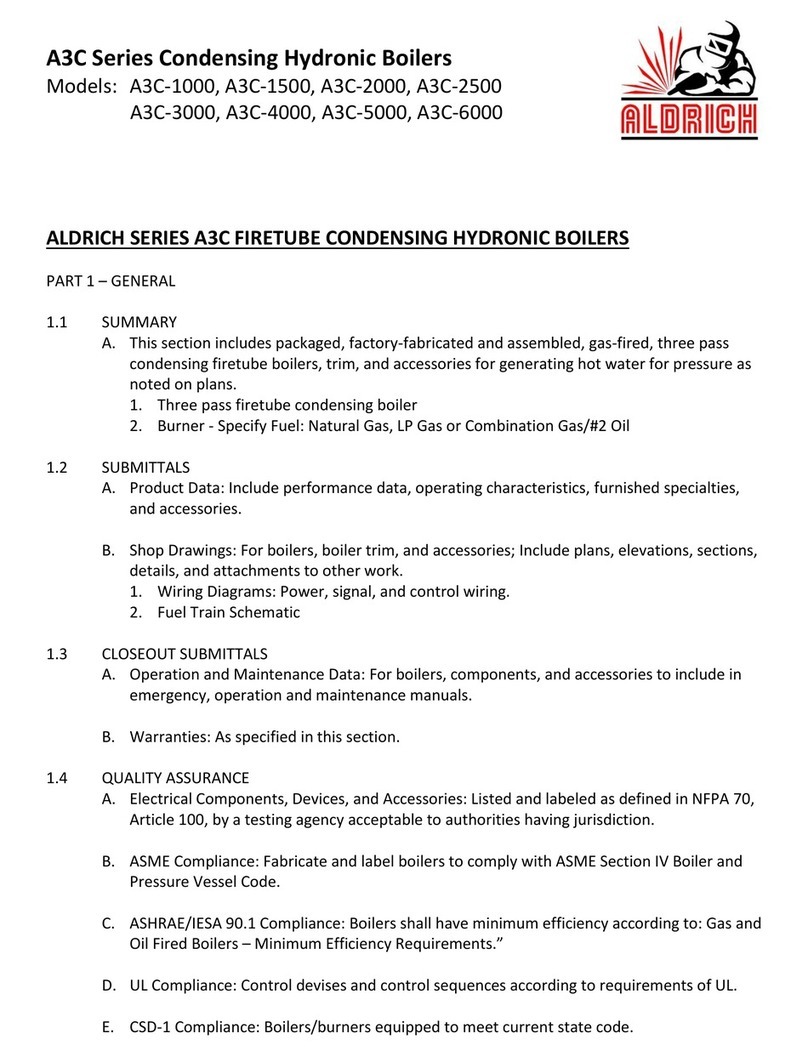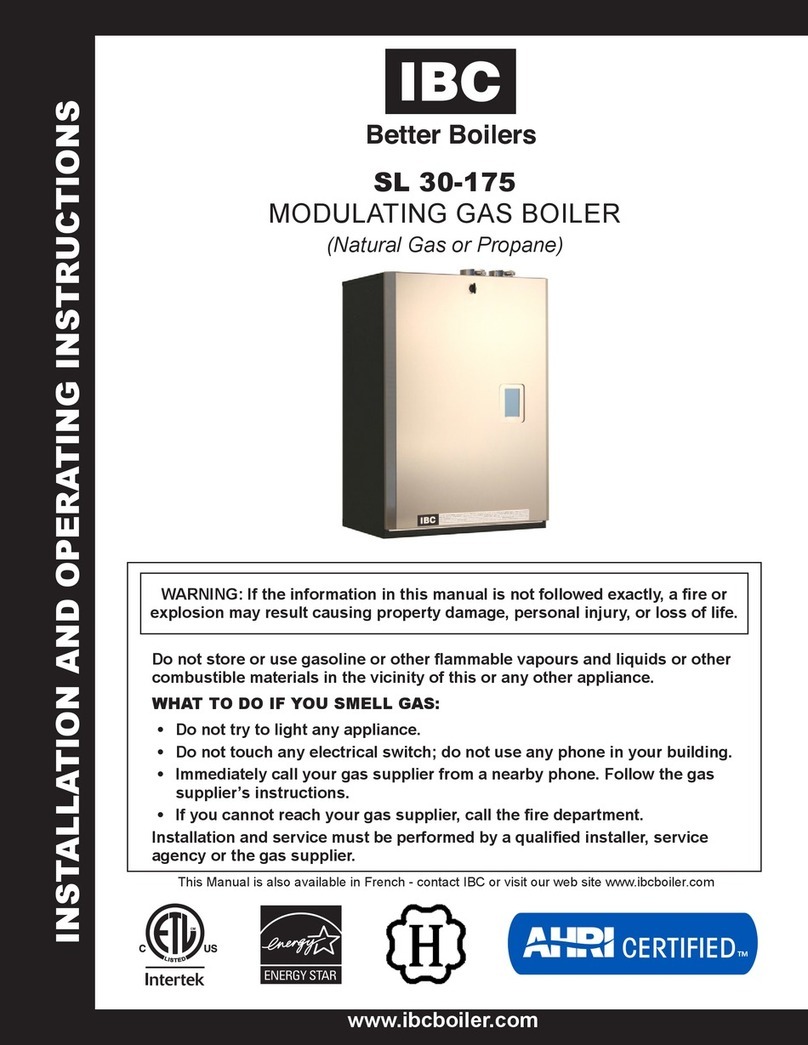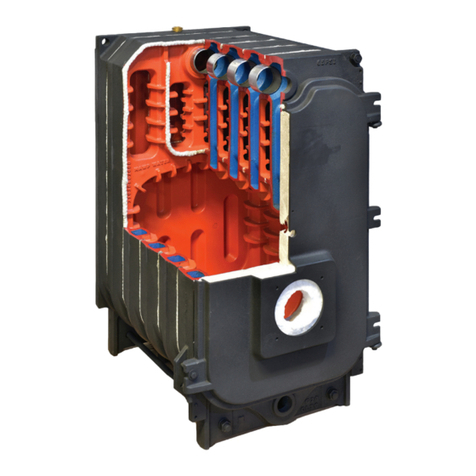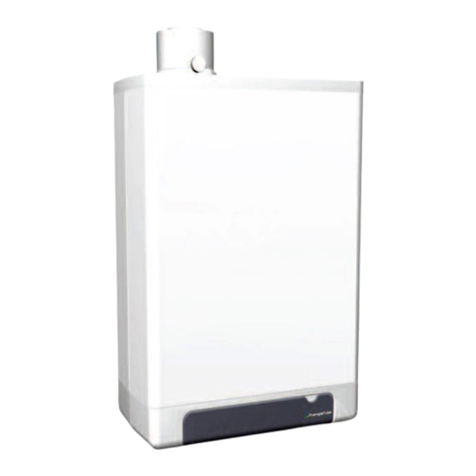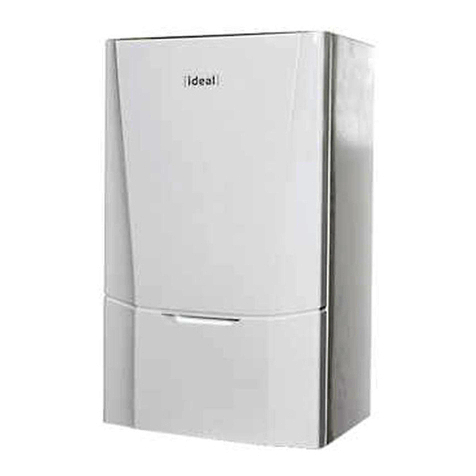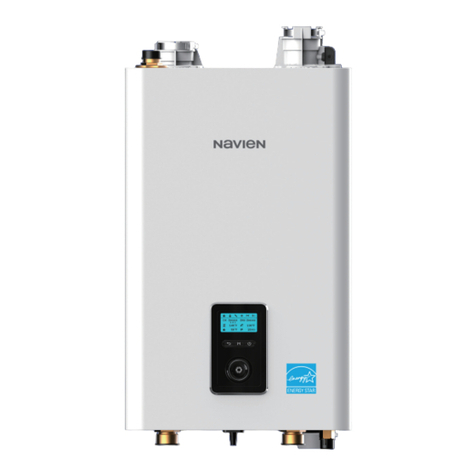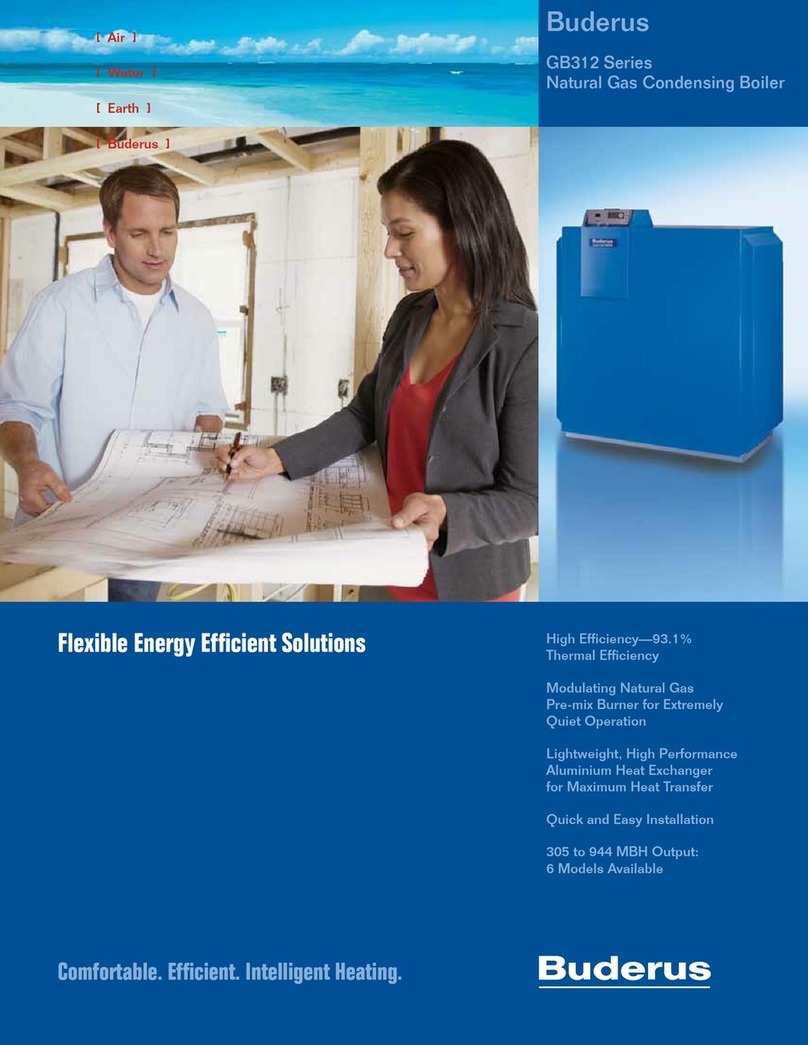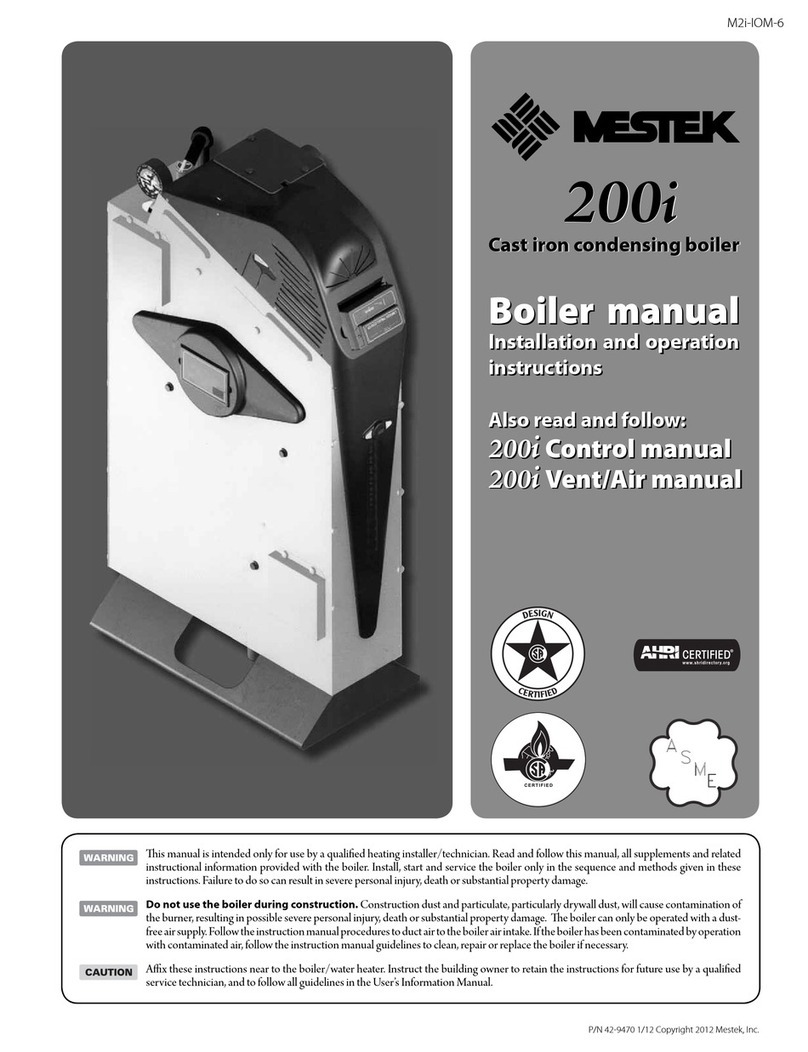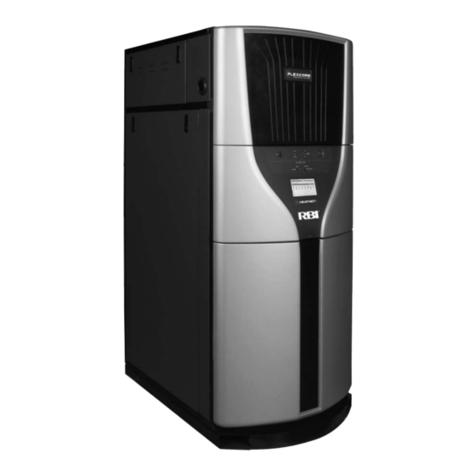
2
Section 1: Introduction
Hazard Definitions
The following terms are used throughout this manual to bring
attention to the presence of potential hazards or to important
information concerning the product.
Indicates an imminently hazardous situation which,
if not avoided, WILL result in death, serious injury or
substantial property damage.
Indicates an imminently hazardous situation which,
if not avoided, COULD result in death, serious injury
or substantial property damage.
Indicates an imminently hazardous situation which,
if not avoided, MAY result in minor injury or property
damage.
Used to notify of special instructions on installation,
operation or maintenance which are important to
equipment, but not related to personal injury hazards.
To reduce the risk of excessive pressures and temperatures in
this water heater, install temperature and pressure protective
equipment required by local codes and no less than a
combination temperature and pressure relief valve certified by a
nationally recognized testing laboratory that maintains periodic
inspection of production of listed equipment or materials, as
meeting the requirements for Relief Valves and Automatic Gas
Shutoff Devices for Hot Water Supply Systems, ANSI Z21.22.
This valve must be marked with a maximum set pressure not
to exceed the marked maximum working pressure of the water
heater. Install the valve into an opening provided and marked for
this purpose in the water heater, and orient it or provide tubing
so that any discharge from the valve exits only within 6 inches
above, or at any distance below, the structural oor, and does
not contact any live electrical part.
The discharge opening must not be blocked or reduced in size
under any circumstances. Hydrogen gas is produced in a hot
water system served by this heater that has not been used for a
long period of time (2 weeks or more). Hydrogen gas is extremely
ammable. When hydrogen is present, there will probably be
an unusual sound such as air escaping through the pipe as the
water begins to ow.
There should be no smoking or open ame near the faucet at
the time it is open. When a water heater is installed in a closed
water-supply system, such as one having a back-ow preventer
in the cold-water supply, means shall be provided to control
thermal expansion. Contact the water supplier or local plumbing
inspector for information regarding the control of this situation.
Model BT26-H, BT40-H & BT80-H
Overview
The Model BT-Series are water tanks suitable for storage of
water and water/glycol mixtures for use in all hydronic systems
for heating, cooling, or a combination of both heating and cooling.
The wide operating range of 32-194°F (0-90°C) allows its use with
chiller/heat-pump, geothermal, fossil fuel or solar systems, or any
combination thereof. The tanks are designed for space conditioning
only. They are not approved for potable or domestic water.
The tank's volume provides thermal storage to retain energy
during period of off cycle or defrosting, and buffering, to extend
boiler or heat pump cycle times, increasing overall system
efficiency and allowing tighter control of supply temperature.
Additionally, each tank is equipped with four circulation ports;
when piped in a primary/secondary arrangement, this ensures
hydraulic separation of the system.
When energized, the two heaters provide 6 kW, or approximately
20,500 BTU/hr of heat to the contents of the buffer tank.
This can be used to achieve three distinct purposes, as controlled
by the Solstice Heat Pump, and configurable through the Carel
μC2 control interface.
1. Standby Freeze Protection. When the chiller is in Standby
(inactive)and the water within the chiller drops below a
predetermined temperature, defined by Parameter A04, the
chiller will engage the circulator immediately, and energize the
electric heaters after an adjustable time delay (0-10 minutes,
adjustable via timer relay, KT, inside the heat pump). The pump
and heaters will continue to operate until the temperature
reaches A04 + A05. The default settings are, A04=36, A05=5
degrees F.
2. Heat Pump Heat Boost. If the water temperature in the circuit
starts below, or falls below, a predetermined temperature,
defined by parameter A08 the chiller will engage the electric
heaters after the adjustable KT time delay. The heaters will
continue to operate until the temperature reaches A08 + A09.
The default settings are, A08=90, A09=5 degrees F.
3. Defrost Operation. If parameter d11 =1 the chiller will engage
the heater during defrost operation after the adjustable KT
time delay,, in order to provide a an additional heat source
to offset heat lost from the system. Setting the parameter to
d11=0 disables this feature. For use with SCM-036, SCM-
060 and LAHP48 heat pumps only.
As with any hydronic heating system, it is HIGHLY recommended
that an oxygen barrier tubing is used throughout the system.
Buffer tanks are to be used in hydronic heating and/or
cooling systems only. All local plumbing codes must
be adhered to. Do not operate beyond specifications
on the rating plate. Failure to comply can result in
property damage, personal injury, or death.
The major components of the BT Series are:
• The BT26-H and BT40-H contain a welded, 18-gauge (.047")
grade 304 stainless steel inner tank with ports for circulation,
air separation & pressure relief, and drain. BT80-H contains a
16-gauge (.059") SSC innner tank.
• 50mm (2") expanded polyurethane insulation for R11 insulating
value.
• Outer shell of .020” powder coated carbon steel.
• ¼" ID temperature sensor well, isolated from the tank interior.
• ½" NPT aquastat well, open to the tank interior.
• Two each 3 kW resistive electric heating elements.
• Electrical junction box for connecting electrical power and
safety circuit wiring for the electric heaters.
DO NOT use for potable water heating. The storage tank and
components are not suitable for the application.
Additional Components Required
• Air Separator and Pressure/Temperature relief valve, to be
located directly in the top of the tank.
• Expansion tank sized for the entire system volume, including
the BT tank, and intended operation mode; heating, cooling, or
combination.










